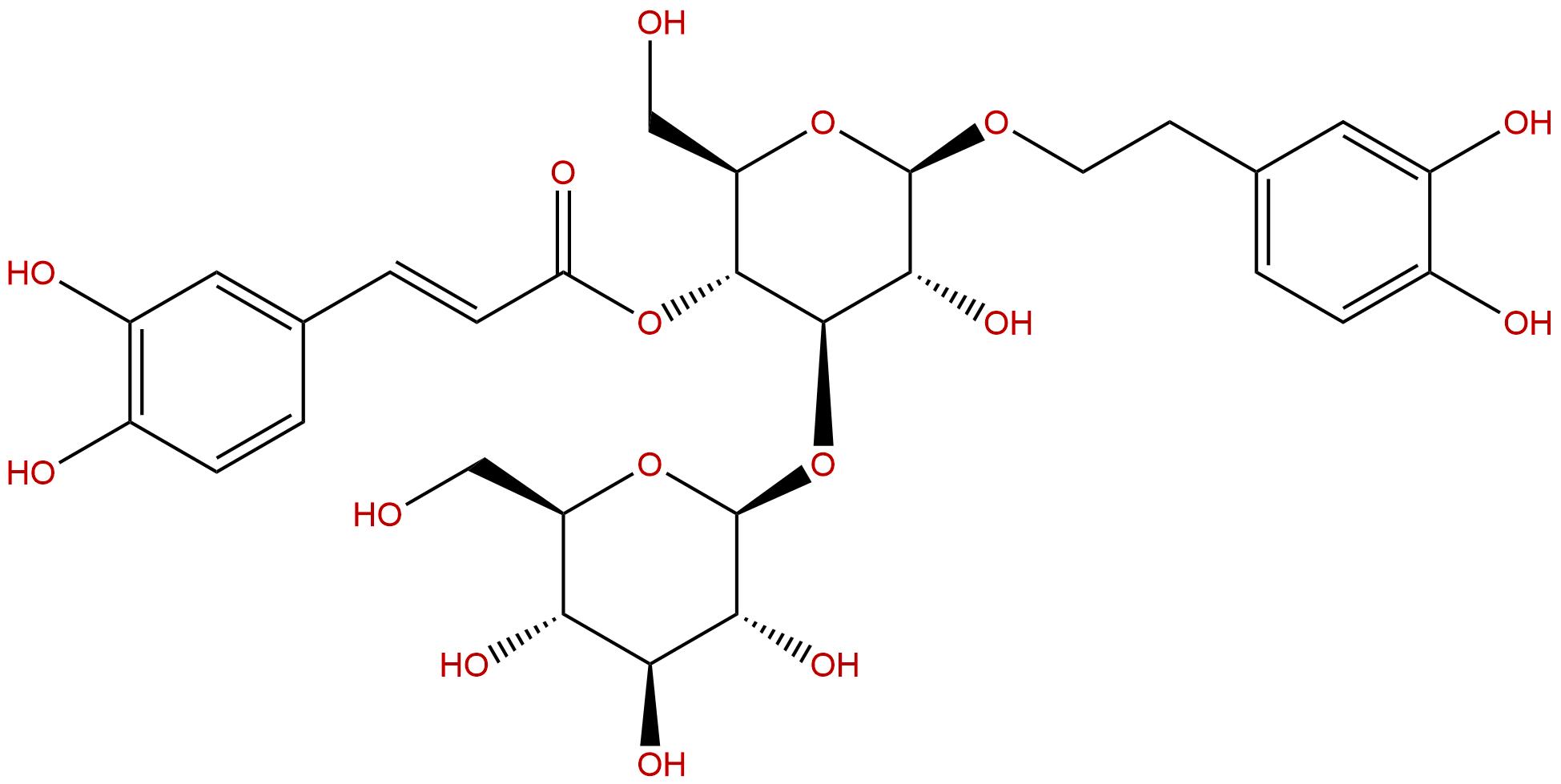Plantamajoside Descrtption
Product name: Plantamajoside
Synonym name: Plantamoside; Purpureaside A
Catalogue No.: BP1110
Cas No.: 104777-68-6
Formula: C29H36O16
Mol Weight: 640.591
Botanical Source: the leaves of Digitalis purpurea, Lagotis stolonifera and Plantago major
Physical Description: White powder
Type of Compound: Phenylpropanoids
Purity: 95%~99%
Analysis Method: HPLC-DAD or/and HPLC-ELSD
Identification Method: Mass, NMR
Packing: Brown vial or HDPE plastic bottle
Storage: Store in a well closed container, protected from air and light. Put into refrigerate or freeze for long term storage.
Whenever possible, you should prepare and use solutions on the same day. However, if you need to make up stock solutions in advance, we recommend that you store the solution as aliquots in tightly sealed vials at -20℃. Generally, these will be useable for up to two weeks.
The product could be supplied from milligrams to grams, up to kilograms
Inquire for bulk scale.
Descriptions:
Plantamajoside has antibacterial activity, and has inhibition activity against cAMP phosphodiesterase and 5-lipoxygenase and antioxidant activity.[1]
Plantamajoside is a bioactive caffeic acid derivative, a dihydroxyphenethyl glucoside in the group of polyphenolic compounds, it is a protective agent against ultra-violet light in plants and acts as antioxidant agent with very low toxicity. [2]
Plantamajoside ameliorates lipopolysaccharide-induced acute lung injury via suppressing NF-κB and MAPK activation, thus, it may be a potential therapy for the treatment of pulmonary inflammation.[3]
Plantamajoside can inhibit UVB and advanced glycation end products‐induced MMP‐1 Expression by suppressing the MAPK and NF‐?B pathways in HaCaT cells, and attenuate the upregulation of receptor for AGEs (RAGE) by glycer-AGEs with UVB irradiation, suggests that it is a promising inhibitor of skin photoaging.[4]
Plantamajoside is a potential anti-tumor herbal medicine inhibits breast cancer growth and pulmonary metastasis by decreasing the activity of matrix metalloproteinase-9 and -2. [5]
References:
[1] Byung-Gyu Park ?, Hyun-Sun Lee ?, Jung S H, et al. Phytother Res, 2007, 21(12):1118-23.
[2] Ravn H W, Mondolot L, Kelly M T, et al. Phytochem Lett, 2015, 12:42-53.
[3] Wu H, Zhao G, Jiang K, et al. Int Immunopharmacol, 2016, 35:315-22.
[4] Han, Ah‐Ram, Nam, Mi‐Hyun, Lee, et al. Photochem Photobiol, 2016,6.
[5] Pei S, Yang X, Wang H, et al. Bmc Cancer, 2015, 15(1):1-12.
[6] Sun Q, Geng F, Cheng X, et al. China Journal of Chinese Materia Medica, 2010, 35(16):2095-8.


